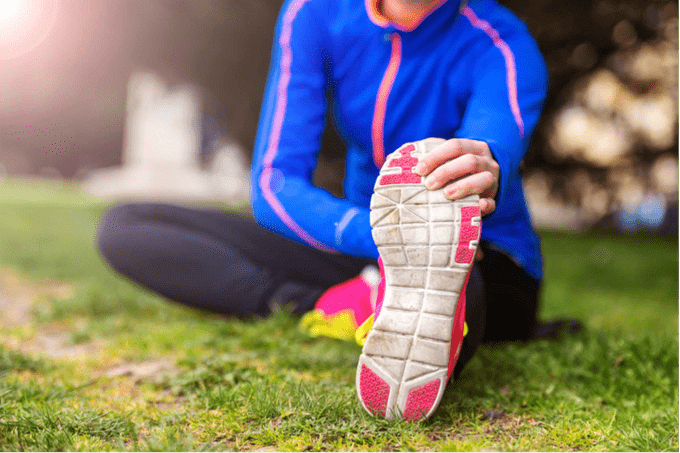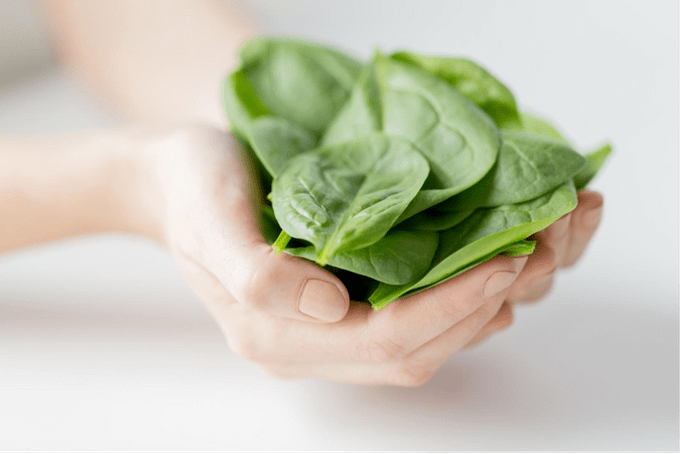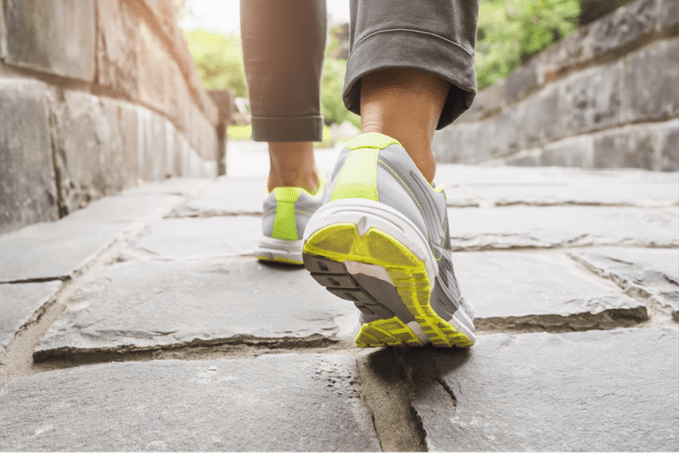8 Simple Things That Have a Big Impact on your Joint Health & Mobility
Updated: Jun. 10, 2021
Your joint health is much more important than you may realize.
Most of us don’t think about our joints often, but it’s these parts of the body that form the connections between our bones that are critical for doing the most basic thing: move. So it’s important to protect your joints. Here, the eight things you can do that could have a positive impact on your joint health.
Start your day with an AM stretch.
By stretching your body first thing in the day, you’ll keep your joints mobile, says Keith Sparks, a doctor of chiropractic medicine in Wichita, Kansas. “Stretching first thing in the day helps improve the elasticity within the muscles,” he says. “Doing a stretch before you even get out of bed helps prime muscle activity and makes the body feel strong.”

Add a proven joint supplement like Cosamin® to your day.
As the premium supplement on the market, Cosamin® is an easy addition to any lifestyle and is scientifically proven to help promote joint comfort by helping to protect the cartilage that cushions your joints and eases movement.* Make sure to create a system to remember when to supplement. To keep track of when to take Cosamin®, set an alarm on your smartphone or create a reminder that works for you, whether that’s a sticky note on your fridge or a note in your calendar.
Do some low-impact movements at home.
To keep your joints strong, take this balance test suggested by Josh Funk, a physical therapist in Germantown, Maryland: “Stand in front of a chair with your back to the chair. Balance on one leg and sit on the chair. Can you do it with control and without ‘plopping’ into the seat? Now, can you get out of the chair without struggle? Ideally, do this for at least 10 repetitions. If you can’t do it, try a higher chair and eventually transition to a lower chair.”
Invest in a foam roller.
The muscles in our body can develop tension for a wide variety of reasons, including overuse, and this can affect our joint health, Funk says. “Muscle tension may also affect your ability to go through full ranges of motion,” he says. “Tightness, knots and a decrease in flexibility can often times be addressed more quickly by using a foam roller which helps break down muscle tightness and enhances flexibility.” A foam roller can help you stretch all the muscles around your key joints.
Seek out joint-friendly foods.
Amp up your consumption of dark leafy greens such as spinach, kale, Swiss chard, mustard greens, and bok choy, along with a variety of colorful vegetables and fruits like squashes, carrots, sweet peppers, berries, and pomegranates. Not only are they rich in inflammation-fighting antioxidants to support your joints and overall health, but they are also a great source of essential nutrients such as calcium, magnesium, and potassium. Being naturally low in calories, these nutritious foods can help keep those extra pounds off your knees while satisfying your hunger.

Stand up straight.
Think of balancing a book on your head as the sign of ideal posture and, by aiming to stand up straight, you’ll keep your joints healthy, says Funk. “Good posture will help protect the key joints in your back and neck,” he says. “The better your posture, the less likely it is that your joints will feel as stressed by the end of the day.” Tip: Practice good posture by pulling your chin down towards your neck and pretending there’s a string on top of your head that’s pulling your head up, suggests Funk. Or, stand with your feet flat on the ground with your heels six inches from the wall. Place your back against the wall. Then place your head against that wall, too, and tuck in your chin.
Make sure to sleep well.
Sleep is supposed to be a time for rejuvenation and people reporting pain are more likely to get poor sleep. “That’s why it’s crucial that if you’re dealing with joint pain, you know what position to sleep in to help feel better by the morning,” says Chris Brantner, a certified sleep science coach at SleepZoo.com. “The position you choose depends on which joints are experiencing pain.” Here are several sleep switches to make:
- Shoulder: If one shoulder is in pain, switch sides. If you prefer back sleeping, consider putting a pillow under your shoulders to prop yourself up.
- Wrists: If your wrist is in pain, elevate it on a pillow while sleeping on your back.
- Knees: If your knees hurt, sleep with a pillow between your knees if you sleep on your side.
- Hips: For hip pain, sleep on the side opposite the hip pain with a pillow between your legs.
- Neck: Achy neck? Sleep on your back. Use a supportive pillow, but don’t use a pillow so thick that it pushes your head forward. You want to be in a neutral position.
Go for a walk.
Walking is one activity that’s particularly helpful for your joints, Sparks says. “Walking throughout the day helps keep your joints mobile,” he says. “Going for a walk keeps the joints in your hips, knees, and ankles healthy. Walking is a full body activity. It affects every single joint in the body.” Another option: Walk in a pool. “It’s a way to put less weight on your joints and it’s great for your overall health and for your joints, no matter your age,” Sparks adds.

Each of these tips should help you promote your joint health. Regarding supplements, remember not all supplements are equal. Choosing a high-quality supplement with premium ingredients and one that is supported by research is critically important. To learn more about Cosamin® and how it may better promote your joint comfort*, click here.
*THESE STATEMENTS HAVE NOT BEEN EVALUATED BY THE FOOD AND DRUG ADMINISTRATION. THIS PRODUCT IS NOT INTENDED TO DIAGNOSE, TREAT, CURE, OR PREVENT ANY DISEASE.